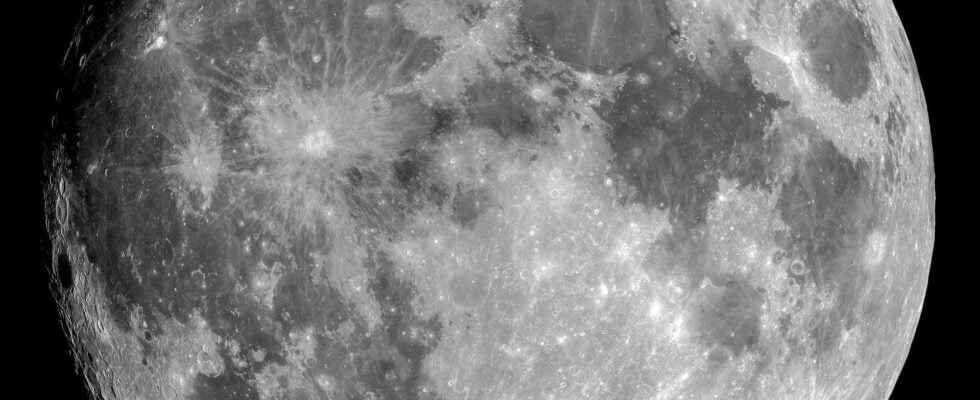Using radar data, scientists were able to identify and characterize the layer of lunar paleo-regolith, buried under a thick layer of volcanic material. This discovery could provide a better understanding of the tumultuous past of our satellite, in particular the meteor bombardment it suffered.
You will also be interested
[EN VIDÉO] Apollo program: where are the moon landing sites? For each Apollo mission, NASA selected two moon landing sites. These are therefore 14 sites that will have been screened before sending astronauts to land there. This selection was not an easy task for NASA, which had to find a compromise between ease of access, mission security and scientific feedback. Our explanations.
In planetary sciences, the term regolith refers to the layer of dust present on the surface of rocky planets without atmosphere or natural satellites. This layer is produced by the erosion of the underlying rocks under the action of meteorite impacts and solar wind. On the Moon, the composition of this layer of regolith is well known, thanks to samples taken by the missions Apollo : it is composed half of vitreous compounds, then of elements rich in silicas, in iron, in calcium and in magnesium.
Maintained by the exposure of the lunar surface to the interplanetary vacuum, and to successive bombardments over millions of years, the regolith layer currently covers the surface of our satellite to a thickness varying from 3 to 5 meters for them. lunar seas, and up to 10, or even 20 meters, for the highlands.
A paleo-regolith buried under thick layers of lava?
By using radar data collected by the Chang’e 3 Chinese mission Yutu rover, a team of scientists, led by Tieyuan Zhu of Pennsylvania State University, succeeded in confirming the presence of a layer of lunar regolith, not on its surface, but buried under thick layers of lava.
The radar on the surface of the Moon sends electromagnetic waves towards the subsoil, and measures the waves returned to the surface when the waves initially emitted encounter a change of medium, causing a change of permittivity dielectric (property physical describing the response of a given medium to a electric field given).
This is exactly what Zhu’s team observed in Chang’e 3 data: the permittivity dielectric of the lunar subsoil varies between an area with low values (likely to characterize a regolith layer, with high porosity) and two areas, on either side of the first, with higher permittivities – likely to correspond to lava flows – leading scientists to confirm the presence of a paleo-regolith stuck between two layers of volcanic material.
A thickness that raises questions about the history of our solar system
Wedged between two layers of lava 2.3 and 3.6 billion years old, this layer of paleo-regolith would have formed over a period of 1.3 billion years, and would have remained intact since it was buried there. 2.3 billion years ago. Based on the analysis of Chang’e 3 data, scientists were able to determine the thickness of the paleo-regolith, varying from about 5 to 9 meters, i.e. values much higher than what was previously proposed: Lunar scientists usually use crater counts, coupled with computer models, to determine the rate of meteor bombardment on a surface, and thereby infer the rate of regolith formation.
According to Tieyuan Zhu, previous studies estimated the rate of lunar regolith formation between -2.3 and -3.6 billion years ago at about 2 meters per billion years (2m / Ga), based on the estimated meteorite bombardment rate for this time period. But the thickness of paleo-regolith tends to double, or even triple, this value, indicating a rate of meteoritic bombardment potentially much higher than what we thought over this period, and overall a meteoritic activity in the solar system larger than previously estimated.
The team of scientists is now working to improve its radar data analysis tool by coupling it toartificial intelligence and methods of machine learning, and hopes to be able to apply it in the near future to Martian data, or other stars of the Solar System.
Interested in what you just read?
.
fs3
